6,000 youths and a protégé of Corbusier helped build Nova Gorica, a model socialist city that authorities hoped would shine across the border from its twin brother – the Italian town of Gorizia.
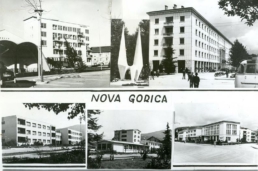
A ‘planned city’, Nova Gorica didn’t exist until after the Second World War, when Italy signed the Paris Peace Treaty with the Allies and Yugoslavia.
The treaty established a new 21.4km border between the two countries. The city of Gorizia stayed on the Italian side, however its surrounding area, largely populated by Slovenians, was given to Yugoslavia. These areas heavily relied on Gorizia as its traditional urban centre, and a place that provided infrastructure such as schools, hospitals and shops.
Yugoslav authorities decided that a substitute must be built, which sowed the seeds for the creation of Nova (new) Gorica.
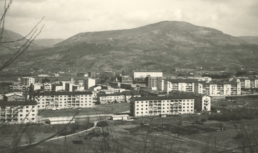
The Birth of a Socialist City
The city’s development was overseen by Yugoslavia’s lifelong president Josip Broz Tito himself, who assigned renowned Slovenian architect Edvard Ravnikar to the project.
Highly-educated, Ravnikar was a protégé of Le Corbusier in Paris before the Second World War, and had also studied under Joze Plecnik, who designed Prague Castle.
He went on to earn a name for himself, playing a significant role in the architectural and urbanistic development of Ljubljana. Developing key concepts in post-war urban planning, he headed many projects across Yugoslavia including New Belgrade.
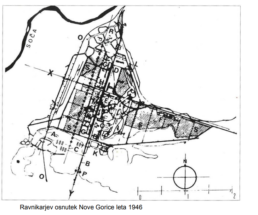
His style has been described as a synthesis of Plecnik’s classicism, Le Corbusier’s brutalism, and as an admirer of Alvar Aalto, Scandinavian modernism. Ravnkiar’s designs and plans focused on dealing with issues such as urban growth, rural development, residential architecture, and traffic planning. According to Ravnikar, post-war urban planning in Yugoslavia was a time of innovative change. He claimed, “what was regarded as utopian and unrealistic before the war, has now been completely legalised.”
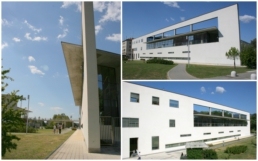
Most buildings in cities throughout Slovenia are more or less close descendants of Central European classism, however Nova Gorica features a range of distinctly socialist styles.
Among them is the Municipal Palace, a grand town hall that features sculptures of partisans and revolutionary motifs. Next to it lies a sleek concrete hulk that forms France Bevk Library (which received an additional albeit tasteful extension in the 00s), and nearby sit ‘Ruski Bloks’ – modern red-bricked flats that were based on plans adapted from Ravnikar’s New Belgrade project.
Originally, Ravnikar envisioned Nova Gorica as a garden city with grand wide boulevards and practical transport connections. However, due to the loss of state funding and weak local economy, these designs had to be abandoned.
According to Slovenian architect and urban planner Tomaz Vuga: “The original plan was given up as early as 1951. However, traces of Ravnikar’s influence are still visible, especially regarding the way in which the streets are networked, as well as the use of greenery”.
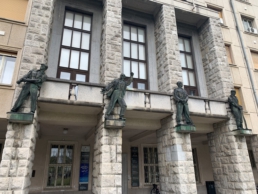
The city was built by more than 6,000 youth brigades, mostly teenagers, who were brought in from all over Yugoslavia. Since no construction machinery was available at the time, they mostly used picks, shovels and even their bare hands to dig out the 260,000 cubic meters of soil needed to pour in the concrete foundations of the buildings. Nova Gorica was officially established as an urban municipality in 1952, incorporating several older neighbouring settlements.
While the idea of Nova Gorica was primarily born due to the local Slovenian population losing Gorizia, the Yugoslav authorities hoped that establishing the city would also prove valuable from an ideological standpoint.
Vuga explains, “The Yugoslav authorities had its own goals, namely, that this new place, directly across from the capitalist West would “shine across the border” and trumpet the success of socialism over capitalism.”
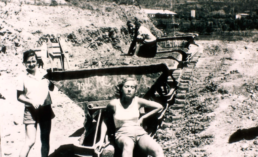
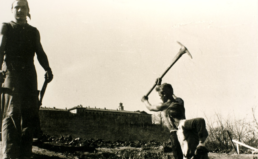
Twin Brothers
The once-divided area draws academics from all over, having been at the centre of numerous studies comparing urban development in the East and West. Svetlana Buko, an intercultural researcher originally from Russia, moved to Nova Gorica to carry out field work. “I moved to Nova Gorica in September 2017, the same month of the city’s 70th anniversary. I unpacked in my new apartment, which was in a very socialist block right in the centre of the city, in one of those historical buildings constructed under the original Ravnikar plan”.
“Every house, every street, reminds you of this great idea of Yugoslav socialism that was embodied through the architecture of the city.” she says.
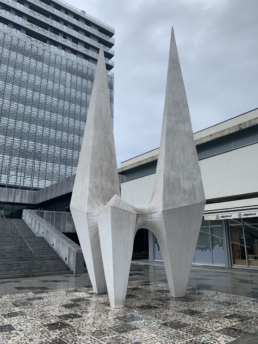
The phenomenon of the “twin cities” is what drew Svetlana to explore the area, particularly focusing on the dynamics between the planned city, and its much older brother Gorizia, which has buildings, such as a castle, that date back to the Middle Ages.
“From one perspective, Nova Gorica could be considered a local Slovenian city. However, I don’t see this place as two cities – one that is Slovenian, and one that is Italian. For me, as an outsider, it is one city that is divided by the border”, she says.
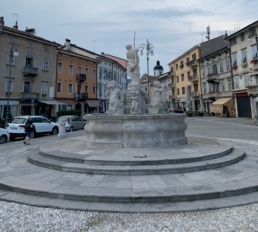
Smuggling Tourism
Local journalist Ana Skrt grew up in the small town of Kanal ob Soci nearby. Back then, taking a trip to Nova Gorica was an opportunity to experience the “big city life”.
Born shortly before the dissolution of Yugoslavia, Ana says that she can’t really identify with Yugoslav nostalgia, having spent most of her life in independent Slovenia. However, she cites that what was extremely important back then, was the connection with the Italian side.
“I remember we were always going there to buy clothes, shoes and food. They had a wider range of choices and also better prices. The Via Rastel (the main square in Gorizia) was full of different shops and it was a special feeling to go shopping there,” Ana says.
“The smuggling across the border was interesting. People smuggled everything, from washing powder and coffee, to radios, guitars and various electronics. The border officers always asked us if we had something to declare, and the answer, of course, was always NO.”
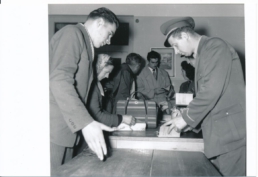
A complete blockade between the cities only existed from 1947 to 1953, and even then, there were many loopholes that allowed small exchanges.
Special permits were given to farmers who owned land in the other country, as well as to companies that were engaged in international trade. Political tensions between Yugoslavia and Italy eased after 1953, and in 1955, border crossings were introduced, which made it possible for residents to go to the other side up for four times a month.
Later on, the limit was lifted completely. This was followed by an ease on the restriction of importing goods, with authorities more or less turning a blind eye to it.
During the 1950s and 1960s, smuggling was mostly perceived as a necessity in order to get essential products like food, medicine, and clothes. However as Yugoslavia developed, smugglers started to focus on other items which more or less turned into shopping tourism.
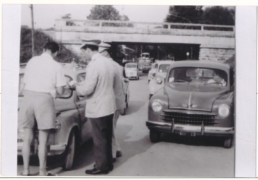
Special interstate agreements also developed an active border trade in goods, which were constituted as legal, as it formally provided for the needs of the border area. Companies from all over Yugoslavia opened branches in Nova Gorica, so they could enjoy more favourable terms when trading with Italy.
Then, in 2004, Slovenia joined the EU. Ana remembers that it was a special time for those living in Nova Gorica. “My classmates and I were sitting on a bench on Erjavčeva (the street that leads to Italy) and were waiting to see what was going to happen after we entered the EU. Of course, nothing happened. But I remember we were talking about how special it was going to be to go to the Italian side, without having to show a passport, or an ID.” Soon after that, when Slovenia became a part of the Schengen zone in 2007, the border was entirely eradicated. In many ways, it was the last ‘Cold War’ fence to be dismantled.

Last month, the world commemorated the fall of another border that divided East and West – the Berlin Wall. It’s been 30 years since the fall, and Nova Gorica is inevitably compared to the city often. However according to architect Vuga, such observations are obsolete. “This situation isn’t directly comparable to Berlin, where a border divided an existing city. It’s just that in this case they were built so close that from above, it looks like they are one.”
While many go back and forth from both sides of the border to buy goods like before, their new kinship has injected vitality into the towns. Since its Schengen membership, Nova Gorica has witnessed a boom in tourism, largely thanks to its gambling sector. Home to one of the largest casinos in Europe, millions of tourists, mostly from Italy, flock there every year to take advantage of the cheap bets and low taxes.
Two very different economical and ideological upbringings have undoubtedly affected these cities. Gorizia, remains a picturesque, albeit sleepy, medieval town, and as for Tito’s Corbusien utopia – perhaps these days Las Vegas is more of a relevant comparison than East Berlin.